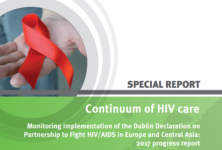07 September 2016 – GENEVA: The World Health Organization (WHO) launched a new Target Regimen Profiles for TB treatment, at the European Respiratory Society (ERS) Annual Congress in London, on Sunday, 4 September.
Aimed at the pharmaceutical industry, research institutions, product development partnerships and donors, the new profiles seek to guide the drug/regimen development process, enabling important drug and regimen features to respond to the needs of end-users, care providers and policymakers.
“These profiles, which go beyond the current standard of care, represent ideal product attributes and priorities to be considered early and coherently during the TB drug research and development process. The goal of candidate regimens must be to be more effective, less toxic, shorter and less-burdening on patients and health systems, ” said Dr Mario Raviglione, Director of the WHO Global TB Programme.
The profiles were developed in consultation with a wide range of stakeholders including national TB programmes, civil society, partners, regulatory authorities and drug developers. The process was led by the WHO Task Force on New TB Drug Policy Development.
The quest for shorter, affordable, safe and effective anti-TB regimens
Despite progress in drug development, current regimens present several challenges to achieving cure, such as limited efficacy and tolerability of drugs for MDR-TB treatment, drug-drug interactions causing safety problems, complexity of treatment protocols for drug-sensitive and drug-resistant TB, and cost concerns. Furthermore, the conventional drug development process is slow. The time is nearly doubled in length by the need for further clinical testing of regimens after constituent drugs have received regulatory approval.
“Setting clear, attainable attributes for future TB treatment regimens – and even for those already in experimental phases of development – is crucial for accelerating release of effective TB regimens, rapid regulatory approval and uptake by countries. Target regimen profiles offer this novel opportunity to all drug developers and researchers,” said Dr Christian Lienhardt, Team Leader Research for TB Elimination at the WHO Global TB Programme.
Prioritizing the needs of patients
The target regimen profiles outline characteristics aimed to address needs of patients, such as pill burden, duration of treatment, toxicity and invasive drug safety monitoring. In addition, the profiles address barriers in rolling out new drugs and regimens.
Representatives of the stakeholders involved in the process expressed their support for the immediate use of these profiles. Mr Wim Vandevelde, Civil Society Representative from the European AIDS Treatment Group (EATG) and Global Tuberculosis Community Advisory Board (TB CAB), emphasised, “Our ultimate goal in the TB community is to decrease suffering and save lives. This can only be possible if we ensure that the design of TB regimens is patient-centric, thus tackling the root of the problem we face in getting patients to cure.”
Dr Giovanni Battista Migliori, ERS Secretary-General and Director, WHO Collaborating Centre for TB and Lung Diseases in Italy, added, “While the landscape of TB drug development has evolved dramatically in recent decades, one major obstacle continues to be the length of time to find optimal drug combinations and also the time to obtain regulatory approvals for new products. These target regimen profiles support regimen development rather than individual drug development. These profiles have the potential to cause a paradigm shift by urging drug developers to direct their efforts towards identifying optimal drug combinations from the very beginning of the TB drug R&D process.”
The way forward
Following the launch of the profiles, WHO and its Task Force on New TB Drug Policy Development will monitor their use, collecting feedback and working with developers, end users and patients to make them more useful, and revising them to reflect new developments in TB treatment and diagnosis.
“The benefit of widely accepted target regimen profiles is clear. Such profiles serve to clarify what attributes of novel regimens will add value in the fight to end TB” said Dr Mel Spigelman, CEO of the TB Alliance, one of the stakeholders engaged in the development of improved, simpler, safer, and affordable TB treatments.
Download:


 ПОИСК ПО САЙТУ
ПОИСК ПО САЙТУ  поиск по ресурсному центру
поиск по ресурсному центру 


